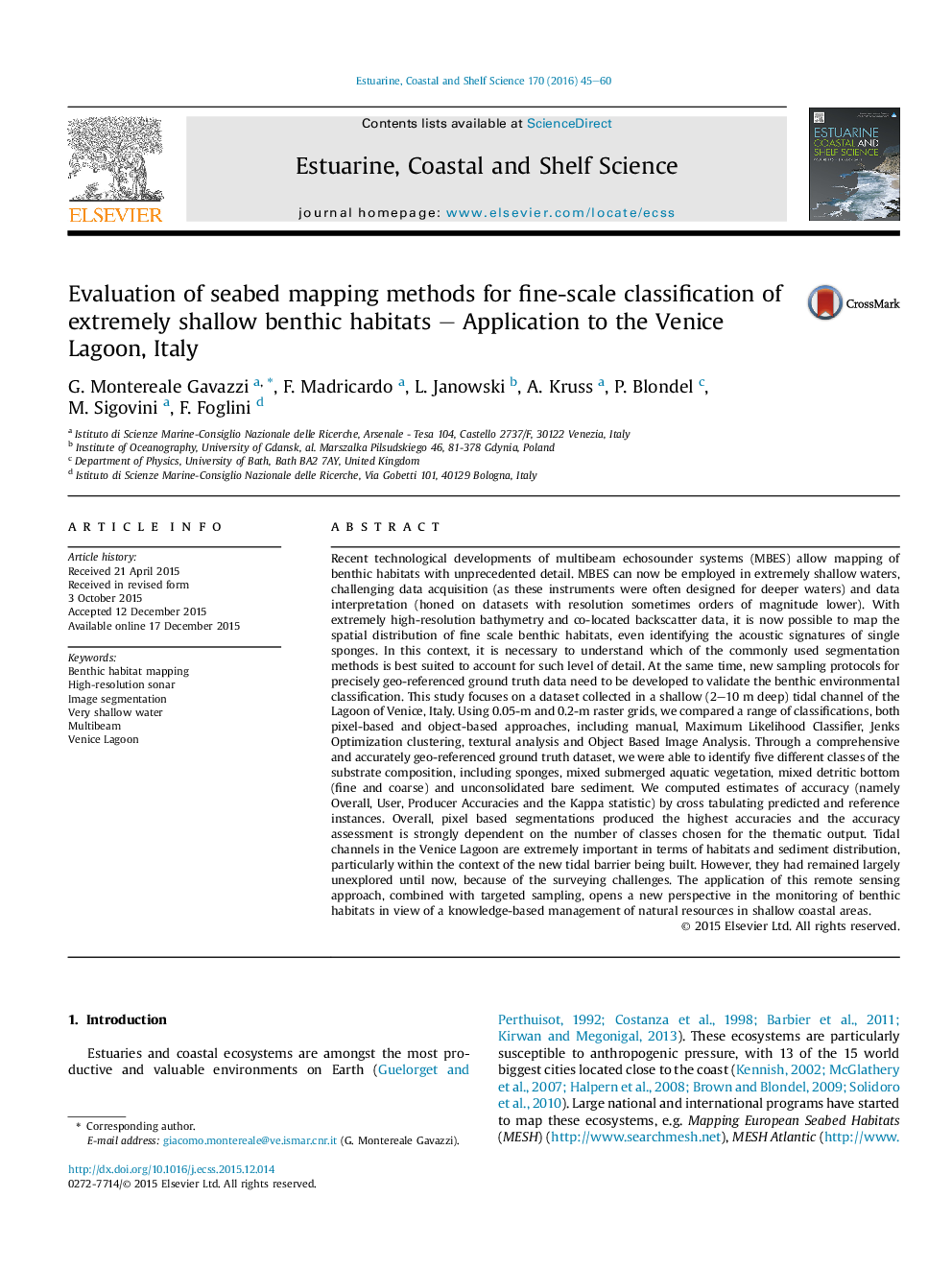| Article ID | Journal | Published Year | Pages | File Type |
|---|---|---|---|---|
| 4539248 | Estuarine, Coastal and Shelf Science | 2016 | 16 Pages |
•We explored poorly known and extremely shallow tidal channels with MBES.•We compare different segmentation approaches for VHR MBES data assessing their merits.•The study allowed the discovery of ecologically noteworthy biogenic features.•Methods investigated are repeatable and applicable to other geographical settings.
Recent technological developments of multibeam echosounder systems (MBES) allow mapping of benthic habitats with unprecedented detail. MBES can now be employed in extremely shallow waters, challenging data acquisition (as these instruments were often designed for deeper waters) and data interpretation (honed on datasets with resolution sometimes orders of magnitude lower). With extremely high-resolution bathymetry and co-located backscatter data, it is now possible to map the spatial distribution of fine scale benthic habitats, even identifying the acoustic signatures of single sponges. In this context, it is necessary to understand which of the commonly used segmentation methods is best suited to account for such level of detail. At the same time, new sampling protocols for precisely geo-referenced ground truth data need to be developed to validate the benthic environmental classification. This study focuses on a dataset collected in a shallow (2–10 m deep) tidal channel of the Lagoon of Venice, Italy. Using 0.05-m and 0.2-m raster grids, we compared a range of classifications, both pixel-based and object-based approaches, including manual, Maximum Likelihood Classifier, Jenks Optimization clustering, textural analysis and Object Based Image Analysis. Through a comprehensive and accurately geo-referenced ground truth dataset, we were able to identify five different classes of the substrate composition, including sponges, mixed submerged aquatic vegetation, mixed detritic bottom (fine and coarse) and unconsolidated bare sediment. We computed estimates of accuracy (namely Overall, User, Producer Accuracies and the Kappa statistic) by cross tabulating predicted and reference instances. Overall, pixel based segmentations produced the highest accuracies and the accuracy assessment is strongly dependent on the number of classes chosen for the thematic output. Tidal channels in the Venice Lagoon are extremely important in terms of habitats and sediment distribution, particularly within the context of the new tidal barrier being built. However, they had remained largely unexplored until now, because of the surveying challenges. The application of this remote sensing approach, combined with targeted sampling, opens a new perspective in the monitoring of benthic habitats in view of a knowledge-based management of natural resources in shallow coastal areas.
